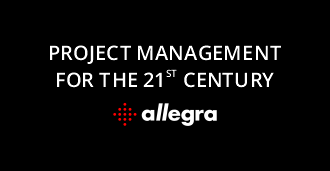Top 6 deadline management tips for 2021
Overview
Every manager knows that deadline management is crucial to successful project management. But what happens when you have to handle multiple projects with overlapping deadlines and teams spread across different time zones while also answering emails, having daily video meetings, and keeping track of what everyone is doing?
As hard it may be to believe it, you don’t need to be a superhero to take care of everything and still manage to avoid sky-high stress, poor quality results, and cost overruns.
All you need is an efficient deadline management process that allows you to organize and plan project activities, manage resources, prioritize and track tasks, set milestones, eliminate bottlenecks, and deliver the work on time.
Keep reading to find out how you can go from ‘mission impossible’ to ‘mission accomplished’.
How do you manage project deadlines like a pro?
There are various reasons why deadlines are missed, including vague time frames, miscommunication among team members or other important stakeholders, lack of organization and accountability, and limited visibility when tracking task progress.
Nevertheless, you can easily set yourself up for success with the right techniques and tools. Take a look at these top 6 deadline management tips that will help you manage your workload efficiently and hit every deadline this year.
1. Prioritize tasks
Start by prioritizing the work that needs to be done by taking into consideration the level of importance and urgency of each task. This task management method is based on Eisenhower’s principle, which divides tasks into four priority groups (Important/Not Important and Urgent/Not Urgent).
The main benefit of using this deadline management technique is that it allows you to determine what urgent tasks must be dealt with first and what work has a lower priority at that moment. Moreover, you can use the Eisenhower matrix when managing multiple projects.
2. Assign clear roles
When you delegate tasks, you also assign responsibility for the outcomes to those in charge. If the roles that you set are understood by everybody involved in the project, you can better distribute the workload, prevent bottlenecks from happening, and improve team communication.
To achieve that, you can use the RACI matrix. This method can help you establish who is responsible, who is accountable, who has to be consulted, and who must be kept informed at every stage of a project.
Reaching a consensus on what responsibilities each stakeholder has will help you speed things up and solve any issue that might occur in no time.
3. Track progress
Keeping track of the current progress made on tasks gives you the opportunity to check if everything is going as planned, if there are any delays, and what can be done to overcome them.
You can use either a Gantt chart or a Kanban board to get a better picture of the project’s progress and maximize task efficiency. While the former provides you with detailed information such as task start and end date, assigned team members, duration, current progress, and dependencies, the latter offers a more simplified overview of a project’s completion level.
4. Improve team communication
Be it on Zoom or Skype, checking in with your team on a regular basis is the best way to ensure that tasks are being completed as scheduled and uncover any possible problems that might prevent you from meeting the deadline.
Remember to also include all the key project stakeholders in your project conversations. This way, you can get approval from the client before you start working, allow team members to assess how realistic the client’s expectations are considering the current workload, and reach out to other executives if you need more resources for a timely delivery.
5. Add a buffer
As human beings, we are prone to fall victim to the planning fallacy. More exactly, when making time estimates, we tend to disregard previous historical evidence and focus only on the task at hand.
Additionally, we don’t always consider the problems that might occur at any stage of our project. A proven deadline management trick is to add buffer time to your project and/or individual tasks, which will help you mitigate any unforeseen risks and meet deadlines.
6. Choose the right project management tool
If you were looking for that secret weapon to enhance your deadline management efforts, look no further.
With a project management software like Allegra, you can organize and assign tasks, monitor their progress in real time, and make adjustments when you spot delays.
Track and manage dependencies within a timeline and find the best solution for your project using the team scheduling feature. Get a clear overview of available resources at all times with the easy-to-use base and personal calendars.
Choose and combine agile and classic project management approaches with a flexible and intuitive system. Have all the methods and tools you need in one place, be it Earned Value, RACI matrix, Gantt chart, or Get Things Done (GTD).
Save time by automating even the most complex tasks in your workflow with the graphical workflow editor and the Allegra Task Engine. No programming needed.
Take the stress out of deadlines
We hope this article will help you on your journey of becoming an expert at planning, organizing, and tracking your projects.
Keep in mind that providing your team with the best tools will not only facilitate their work but also motivate them to go above and beyond to meet project deadlines and deliver high-quality work to your clients.
Tired of always having to push your deadlines? Start your Allegra free 30-day trial and create a project management workflow that actually works.




